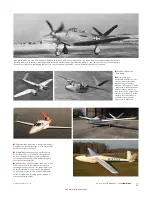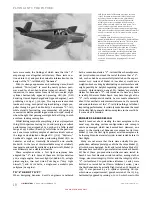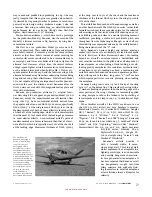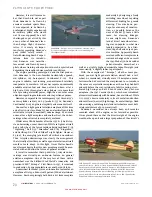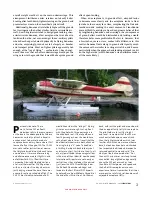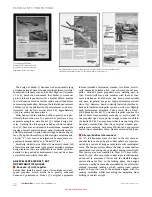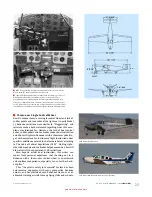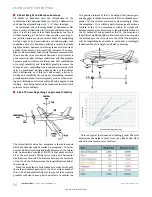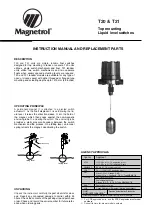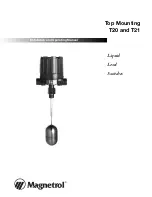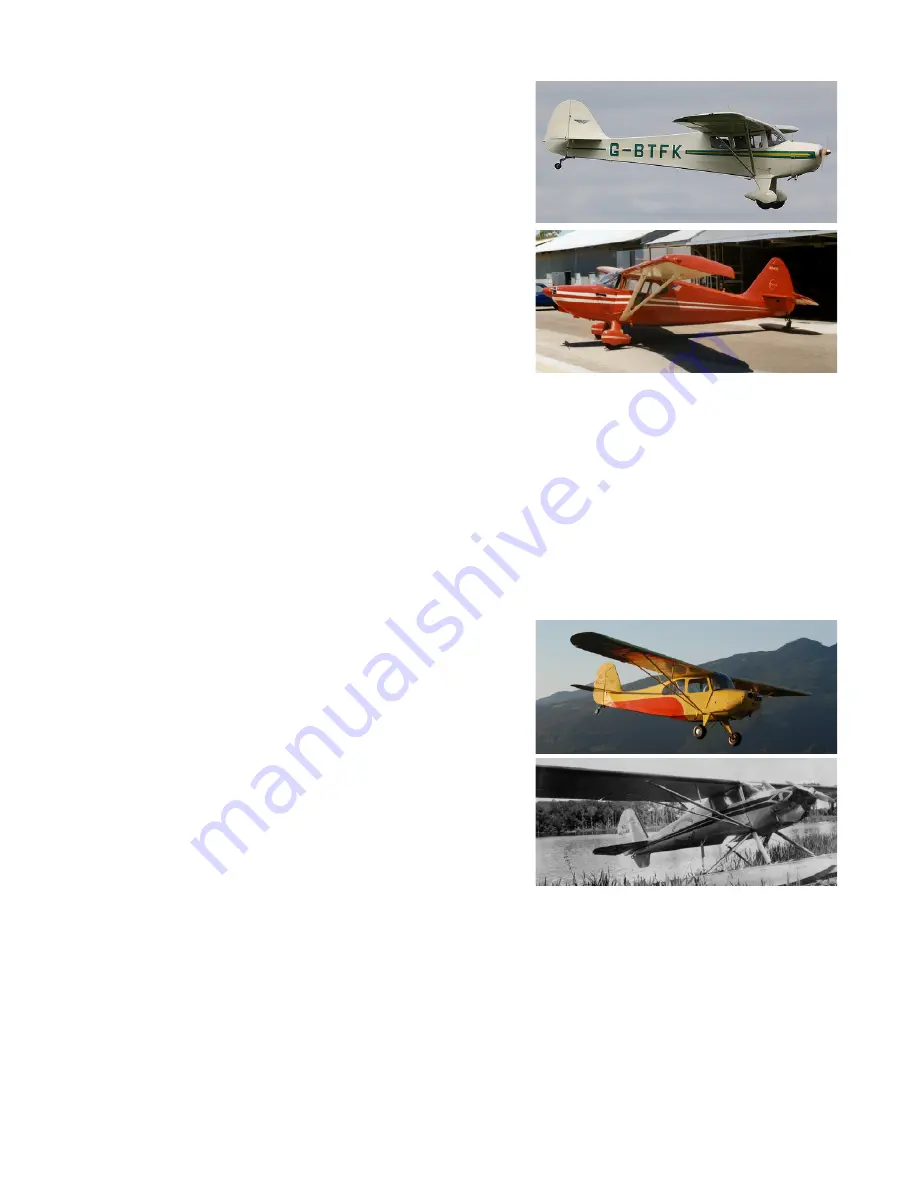
www.a2asimulations.com
ACCU-SIM V35B BONANZA
:::
A2A
SIMULATIONS
9
FOR SIMULATION USE ONLY
Model 17 seats a pilot and three passengers, is a single-
engine, fabric- covered biplane with a wingspan of thirty-
two feet weighing 4,250 lbs. fully loaded. By comparison, a
typical late 1930s Model 18 seats two pilots and up to eight
passengers, is a twin-
engine, all-
metal, cantilever (no
external struts) monoplane with a wingspan of forty- seven
feet, eight inches weighing 7,500 lbs, fully loaded.
After selling only thirty- eight Beech 18s before the United
States’ entry into W.W. II including one to Sweden as an air
ambulance and six to the Nationalist Chinese Government as
M18R Light Bombers, once the war began the various U. S.
armed forces, the Royal Canadian Air Force (RCAF) and the
Royal Air Force (RAF) purchased more than 4,000 Beech 18s.
Beech built two other aeroplanes during the war. One
of these was the twin- engine Beech Model 26 AT- 10/11
“Wichita”/”Kansan,” a militarized derivative of Model 18.
This aeroplane was built in response to the U. S. Army Air
Corps’ (USAAC) requirement for a twin- engine, retract-
able undercarriage, multi- engine trainer similar to Cessna’s
AT- 8.
The second military aeroplane that Beech designed
and built during the war was the remarkable 1944 Beech
XA-
38 “Grizzly”, an experimental twin-
engine ground
attack fighter of which only two prototypes were con-
structed. “Grizzly” was a completely original design cre-
ated in response to the USAAF’s requirement for a replace-
ment for the Douglas A- 20 “Havoc” which by 1944 was
long past showing its age “Grizzly” was powered by two
2,300 hp Wright R-
43 air-
Unfortunately these engines were already in use by Boeing
B- 29 Superfortress which had the highest priority for them.
In early 1944 an invasion of Japan was deemed to be likely
and the USAAF wanted a fast, powerful and lethal ground
attack aeroplane which could be employed to neutralize
Japanese fortified ground installations and artillery. For this
purpose Beech designed XA- 38 around the most powerful
engines available (or unavailable as it turned out) install-
ing a 75 mm cannon in its nose as the aeroplane’s primary
weapon in the same fashion as North American B- 25G/H
“Mitchell.” “Grizzly” also had two remotely operated
machine gun turrets similar to those in B- 17, P- 61, B- 29,
Me- 210 and He- 177A. With a total 4,600 hp, it had a blister-
ing top speed of 370 mph at sea level, faster than most of the
Japanese fighters that it was likely to encounter. Although
the war ended before XA- 38 “Grizzly” could go into pro-
duction and prove its worth in combat, it was, in its day,
an extraordinary and unmatched achievement in design and
sophisticated construction technique for what had previ-
ously been a light aeroplane company. Beech’s production
of both Model 18 and “Grizzly” set the stage for another
aeronautical achievement still to come.
The extraordinarily prolific Beech Model 18 “Twin Beech”
was produced in 25 USAAF variants, 14 U. S. Navy (USN)/U.
S. Marine Corps (USMC) variants and 9 RAF and RCAF vari-
ants as well as being in operation in 43 foreign air forces.
But for this versatile and excellently performing modern
aircraft Beech might have continued to produce only its
■
1946 Taylorcraft BC- 12D. C. G. Taylor’s clean design made BC-
12DA a slight refinement of his 1938 Model “BC,” which was itself
a refinement of the 1938 Piper J- 3 “Cub.” BC- 12 has dual control
wheels instead of control columns and a door on each side of the
cabin for easy entrance and exit. Whilst Taylorcraft’s side- by- side
seating is better for instruction as well as for pilot- passenger
communication in general, these aeroplanes are not very wide and
their snug interiors are insufficient for two “full- sized” adults.
■
1947 Stinson 108- 2 “Station Wagon.” A roomy four- seater,
interior wood panels and a reinforced floor permit 600 lb (272 kg)
of baggage to be carried in the passenger compartment. Its 165
hp Franklin 6A4- 165- B3 engine can use automotive fuel with the
installation of a converter kit. The Stinson’s wings’ fixed leading-
edge slats make the 108 series excellent and reliable slow fliers,
enabling them to easily get into and out of small tree- lined fields.
■
1947 Aeronca “Champ.” Another refinement of the J- 3 “Cub”
design with similar tandem seating and similar performance. Solo
from the front seat is a definite improvement over “Cub’s” rear
seat solo station and “Champ’s” large windows make visibility
in all directions much better. Having had a number of hours in
a “Champ,” this writer has found this responsive and sprightly
aeroplane to be the best of the lot of this type.
■
1947 Luscombe 8A “Silvaire” on floats. Rather fast for its 65 hp
engine with a top airspeed of 85 mph or so, the aeroplane in the
photo is identical to the “Silvaire” in which this writer first received
instruction and learned to fly the age of 12. Luscombe “Silvaire”
has dual control sticks rather than control wheels making it a very
fun and responsive aeroplane.
Summary of Contents for BONANZA ACCU-SIM V35B
Page 1: ...A2ASIMULATIONS BONANZA ACCU SIM V35B BONANZA ...
Page 3: ...A2ASIMULATIONS BONANZA ACCU SIM V35B BONANZA ...
Page 5: ...www a2asimulations com ACCU SIM V35B BONANZA A2ASIMULATIONS 5 FOR SIMULATION USE ONLY ...
Page 27: ...www a2asimulations com ACCU SIM V35B BONANZA A2ASIMULATIONS 27 FOR SIMULATION USE ONLY ...
Page 58: ......
Page 68: ...68 A2ASIMULATIONS ACCU SIM V35B BONANZA www a2asimulations com FOR SIMULATION USE ONLY ...
Page 112: ......

















